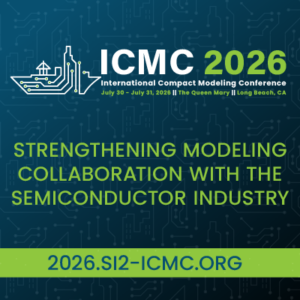Power seems to be on everyone’s mind these days. Hyperscale data centers worry about operating costs unless power is optimized. The AI accelerators in the Edge can’t be effective without optimized power. Advanced 2.5 and 3D packages simply can’t remove the heat unless power is optimized. And then there’s all those gadgets we … Read More
Author: Mike Gianfagna
SiFive Expands RISC-V Technology and its Ecosystem at the Fall Linley Processor Conference
As the Linley Fall Processor Conference winds down, there are certain presenting companies that left a lasting impression. SiFive is one of those companies. On October 21, SiFive introduced the newest member of the SiFive Intelligence family of processor coresSiFive Intelligence family of processor cores, based on… Read More
Achronix is Driving the Fourth FPGA Wave
Technology typically evolves in waves. Sometimes it’s referred to as a “revolution” or an “age”. The industrial revolution and the information age are examples. These kinds of categorizations help to clarify the impact of innovation in ways that are relevant to everyone – you can’t look away if the world is changing around you.… Read More
Creating Workflows for HCL Compass Just Got Easier
Workflows allow the world to function. The orderly process of sequencing tasks and automating handoffs creates tremendous potential for efficiency and error avoidance. As they say, time is money and workflows can save a lot of time. The principle applies in all kinds of industries. If you design chips for a living, you’re very … Read More
I Have Seen the Future – Cornami’s TruStream Computational Fabric Changes Computing
Here is another installment regarding presentations at the Linley Fall Processor Conference. Every now and again, you see a presentation at an event like this that shakes you up. Sometimes in a good way, sometimes not so much. I attended the Cornami presentation on its new TruStream computational fabric and I was definitely shaken… Read More
Designing Smarter, not Smaller AI Chips with GLOBALFOUNDRIES
On October 20 at the Linley Fall Processor Conference, GLOBALFOUNDRIES made a compelling case for designing smarter, not smaller AI chips. The virtual conference was filled with presentations on the latest architectures and chips for all types of AI/ML applications. It was therefore a refreshing change of pace to hear the fab… Read More
How ML Enables Cadence Digital Tools to Deliver Better PPA
There has been a lot written about artificial intelligence/machine learning (AI/ML) and its application in the Cadence digital design flow. Most recently, I covered significant verification efficiency improvements in Xcellium ML. A recent digital-themed white paper from Cadence takes a broader look at the impact of ML on… Read More
Siemens is the True Catalyst for Secure and Trusted Digital Transformation
Introduction
For many years, I pondered the ultimate future of EDA. Companies such as Oracle, SAP and Dassault provide a huge array of enabling software infrastructure for the enterprise, including product design, mechanical design, project management and materials sourcing. But not for the all-important tasks of chip and… Read More
Synopsys Enhances Chips and Systems with New Silicon Lifecycle Management Platform
SLM. It’s a TLA (three-letter acronym) that you’ll be hearing more about. It stands for silicon lifecycle management and it has the potential of re-defining the role of EDA in the entire electronics ecosystem. A working definition of SLM is “monitoring, analysis and optimization of semiconductor devices as they are designed,… Read More
Flex Logix Brings AI to the Masses with InferX X1
In April, I covered a new AI inference chip from Flex Logix. Called InferX X1, this part had some very promising performance metrics. Rather than the data center, the chip focused on accelerating AI inference at the edge, where power and form factor are key metrics for success. The initial information on the chip was presented at … Read More



















Quantum Computing Technologies and Challenges